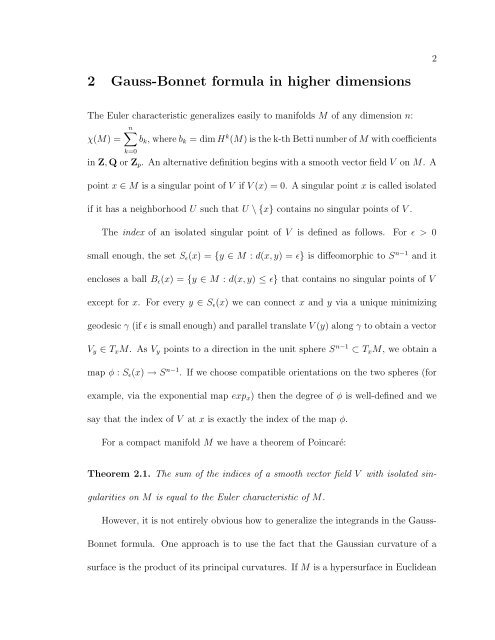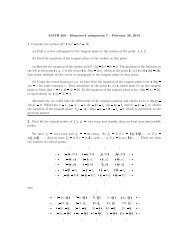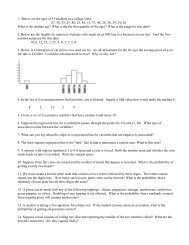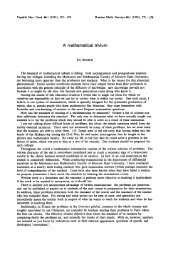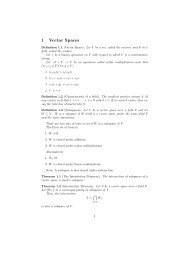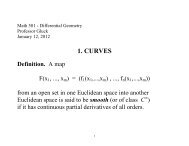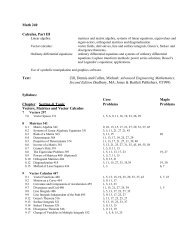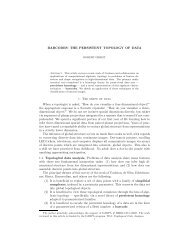MORSE THEORY AND THE GAUSS-BONNET FORMULA Alina ...
MORSE THEORY AND THE GAUSS-BONNET FORMULA Alina ...
MORSE THEORY AND THE GAUSS-BONNET FORMULA Alina ...
Create successful ePaper yourself
Turn your PDF publications into a flip-book with our unique Google optimized e-Paper software.
2 Gauss-Bonnet formula in higher dimensions<br />
The Euler characteristic generalizes easily to manifolds M of any dimension n:<br />
n�<br />
χ(M) = bk, where bk = dim Hk (M) is the k-th Betti number of M with coefficients<br />
k=0<br />
in Z, Q or Zp. An alternative definition begins with a smooth vector field V on M. A<br />
point x ∈ M is a singular point of V if V (x) = 0. A singular point x is called isolated<br />
if it has a neighborhood U such that U \ {x} contains no singular points of V .<br />
The index of an isolated singular point of V is defined as follows. For ɛ > 0<br />
small enough, the set Sɛ(x) = {y ∈ M : d(x, y) = ɛ} is diffeomorphic to S n−1 and it<br />
encloses a ball Bɛ(x) = {y ∈ M : d(x, y) ≤ ɛ} that contains no singular points of V<br />
except for x. For every y ∈ Sɛ(x) we can connect x and y via a unique minimizing<br />
geodesic γ (if ɛ is small enough) and parallel translate V (y) along γ to obtain a vector<br />
Vy ∈ TxM. As Vy points to a direction in the unit sphere S n−1 ⊂ TxM, we obtain a<br />
map φ : Sɛ(x) → S n−1 . If we choose compatible orientations on the two spheres (for<br />
example, via the exponential map expx) then the degree of φ is well-defined and we<br />
say that the index of V at x is exactly the index of the map φ.<br />
For a compact manifold M we have a theorem of Poincaré:<br />
Theorem 2.1. The sum of the indices of a smooth vector field V with isolated sin-<br />
gularities on M is equal to the Euler characteristic of M.<br />
However, it is not entirely obvious how to generalize the integrands in the Gauss-<br />
Bonnet formula. One approach is to use the fact that the Gaussian curvature of a<br />
surface is the product of its principal curvatures. If M is a hypersurface in Euclidean<br />
2


